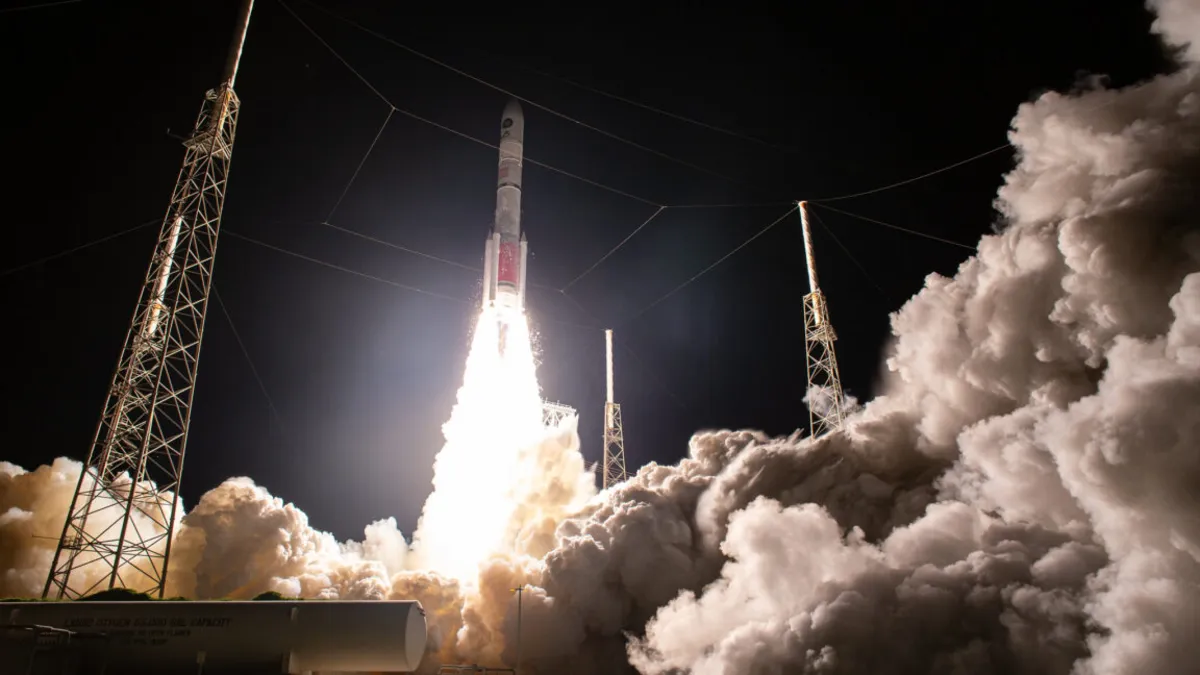
United Launch Alliance (ULA) achieved a significant milestone on Tuesday night with the successful launch of its new Vulcan rocket, delivering multiple US military satellites into high-altitude orbit. This mission, designated as USSF-106 by the US Space Force, marked the inaugural flight of the Vulcan rocket carrying national security payloads. Following two test flights last year, military officials expressed enough confidence to certify Vulcan for launching the Pentagon's medium-to-large space missions.
The 202-foot-tall (61.6-meter) Vulcan rocket lifted off from Cape Canaveral Space Force Station in Florida at 8:56 PM EDT (00:56 UTC Wednesday). It was powered by two methane-burning BE-4 main engines from Jeff Bezos' Blue Origin and four solid-fueled boosters from Northrop Grumman, generating nearly 3 million pounds of thrust. The rocket ascended eastward from Florida's Space Coast, jettisoning its strap-on boosters, core stage, and payload fairing into the Atlantic Ocean as it climbed through the atmosphere.
Vulcan's Centaur upper stage ignited its RL10 engines multiple times to maneuver into a near-circular geosynchronous orbit over 22,000 miles (nearly 36,000 kilometers) above the equator. These maneuvers lasted approximately seven hours before the Centaur stage released its payloads to commence their missions. Among the satellites was an experimental platform aimed at testing next-generation technologies to improve GPS navigation. The Space Force also acknowledged at least one additional satellite aboard, though specifics were not disclosed.
Officials from ULA and the Space Force celebrated the successful launch early Wednesday, marking Vulcan's entry into service. This launch is pivotal as ULA embarks on the task of managing a backlog of over 70 Vulcan launches on contract. A significant portion of these launches has been booked by the Space Force's National Security Space Launch (NSSL) program, as well as by Amazon for its Kuiper satellite broadband network.
Col. Jim Horne, the mission director for USSF-106, stated, "It’s an exciting day for us as we launched the first NSSL flight of Vulcan, an outstanding achievement for United Launch Alliance and the nation’s strategic space lift capability." He further added that the successful completion of this mission is a testament to years of collaboration and dedication from all stakeholders involved.
Launching national security missions poses unique challenges. The rocket's upper stage must withstand higher radiation exposure and carry increased electrical power capacity. Additionally, it must maintain super-cold propellant at optimal temperatures to avoid issues with freezing or boiling off due to extreme temperature variations. Currently, only ULA's Centaur upper stage and SpaceX's Falcon Heavy upper stage can handle such demanding missions.
Gary Wentz, ULA's vice president of government and commercial programs, emphasized the success of the Vulcan mission, stating, "Vulcan did exactly what it was built to do: deliver a critical mission with power, precision, and confidence." Wentz highlighted ULA's vital role in bolstering the nation's space capabilities.
Looking ahead, ULA plans to revert to launching its soon-to-retire Atlas V rocket, with 13 more Atlas Vs in its inventory, primarily for Amazon and Boeing missions. ULA confirmed that its next mission will be an Atlas V launch for Amazon's Kuiper constellation, which aims to deploy over 3,200 satellites to provide global internet coverage. Later this year, ULA anticipates launching more Vulcan rockets for both Kuiper satellites and the Space Force's subsequent national security missions.
The Space Force has firm orders for at least 26 more Vulcan launches, with additional contracts expected in the coming years. Despite the recent success of the Vulcan launch, concerns remain regarding ULA's ability to meet its contractual commitments, especially given the challenges of ramping up launch cadence.
ULA's operational bottlenecks stem from its reliance on single-use boosters and a limited launch infrastructure. Currently, the company operates a single launch pad at Cape Canaveral and is outfitting another at Vandenberg Space Force Base in California. The integration of a second rocket assembly building is underway, which, once completed, could allow ULA to conduct launches as frequently as every 13 days, aiming for a target of 25 missions per year.
Additionally, ULA is pursuing enhancements to the Vulcan rocket's core stage to enable the recovery and reuse of its main engines. This includes modifications for safe recovery of the engines after launch, a move that could further bolster ULA's operational efficiency.
As ULA navigates the complexities of increasing its launch frequency and enhancing its rocket capabilities, the future of the Vulcan rocket will be critical not only for ULA but also for the broader objectives of the US Space Force and the nation's security in space.